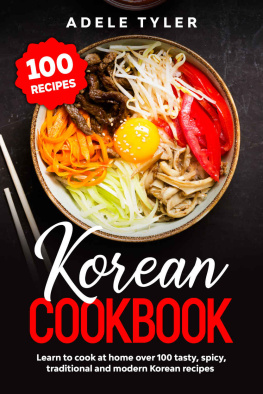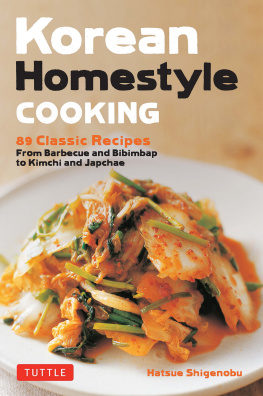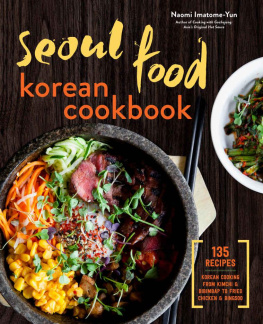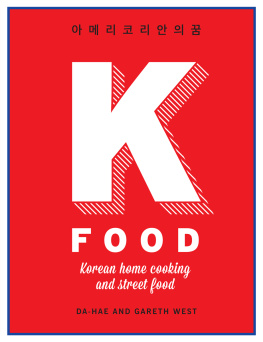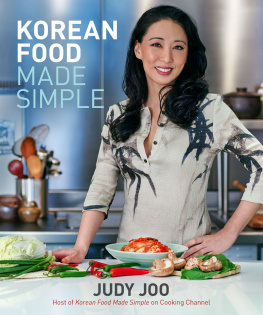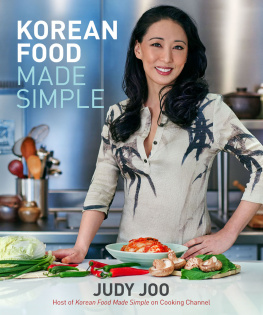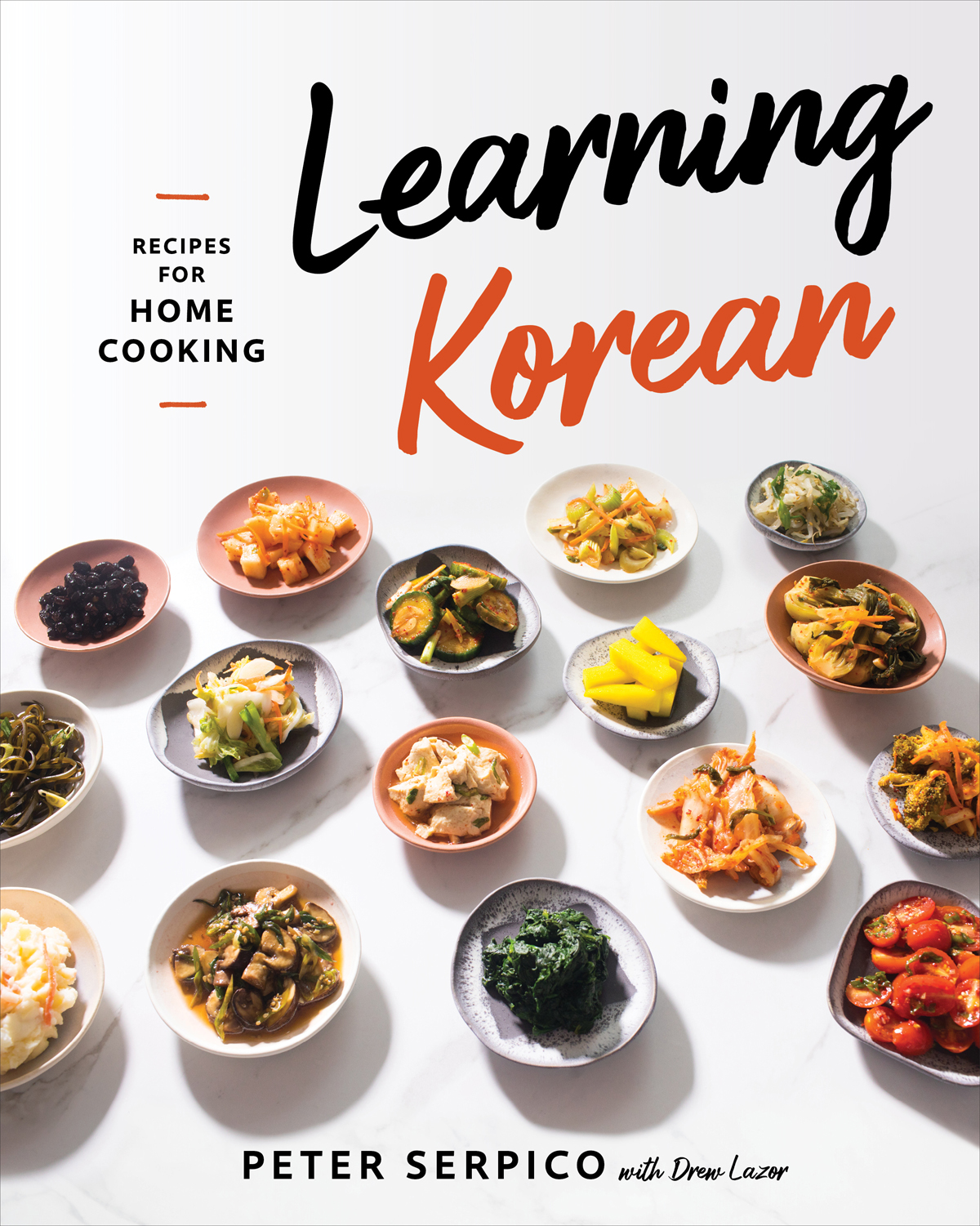Contents
Guide
Page List

Learning Korean
Recipes for
Home Cooking
Peter Serpico with Drew Lazor
Photography by Neal Santos


To my mom,
who worked so tirelessly to put a hot meal on the table every night.
To my dad,
who has always supported me to live my dreams.
To my wife and best friend,
you make me better every day.
To my daughter,
you are the brightest light.

Contents
If you are going to follow links, please bookmark your page before linking.
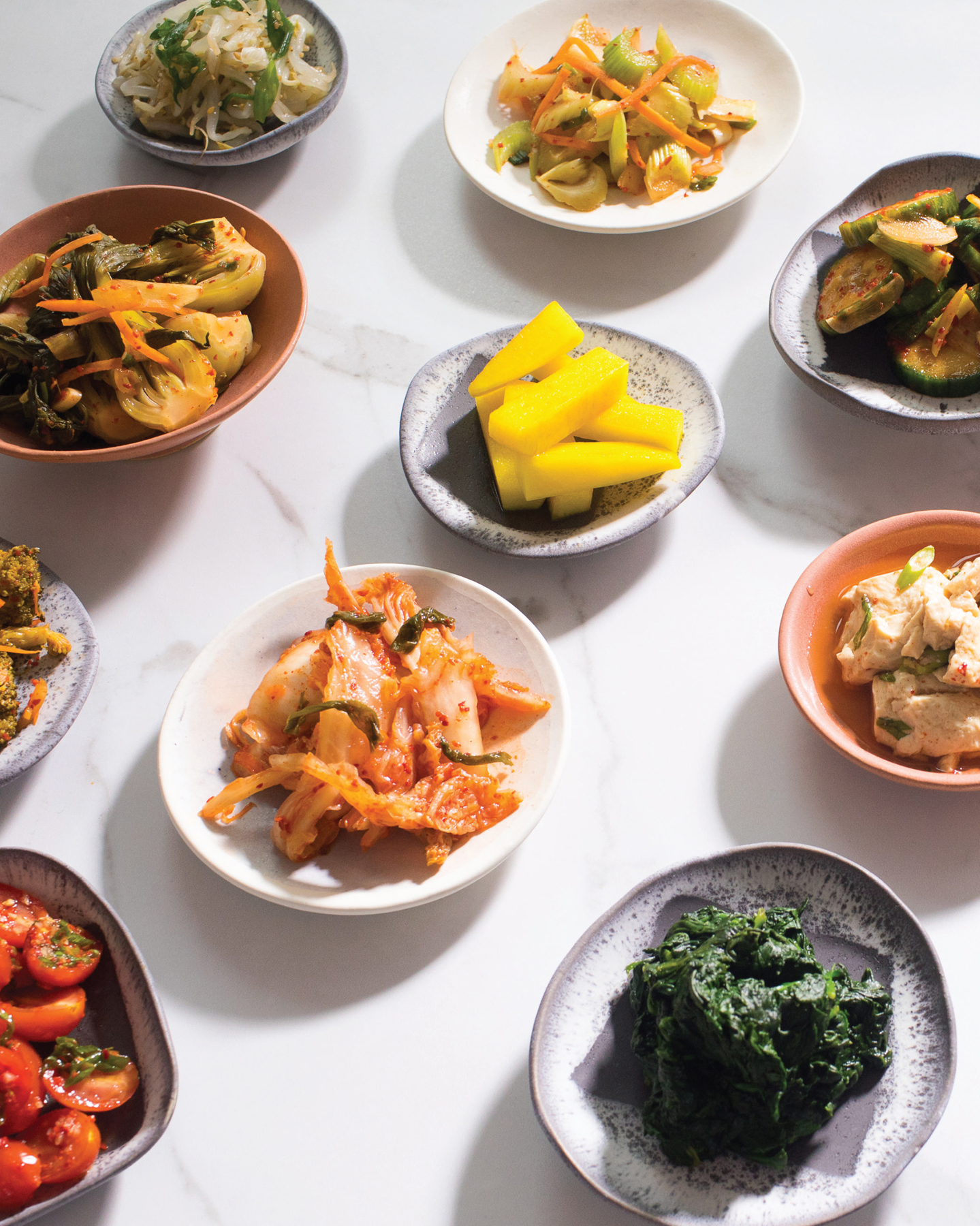
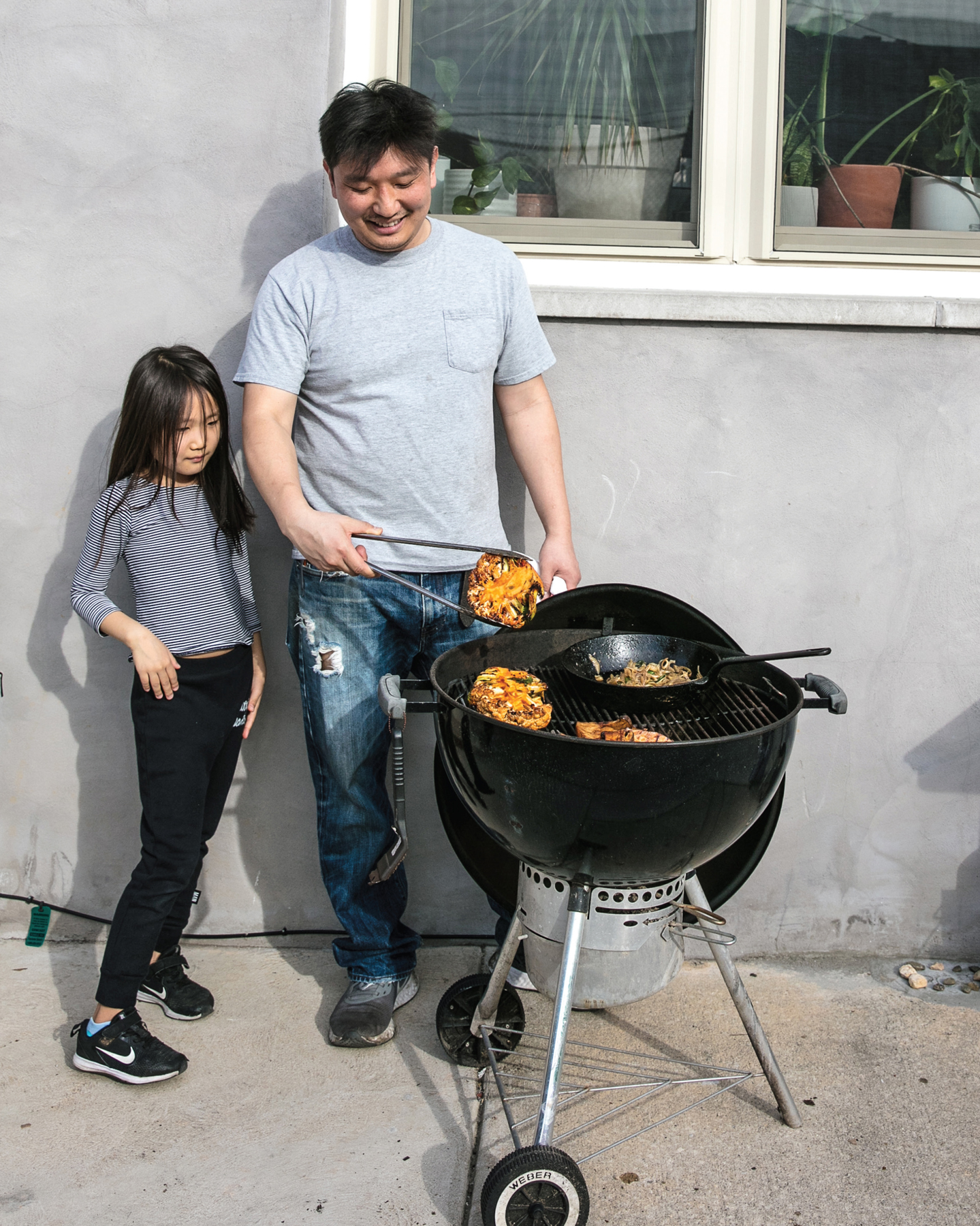
KOREAN FOOD NOURISHES ME IN A WAY nothing else canthe kind of fulfillment you experience so deeply that using words to describe it seems like a disservice. The easiest and most accurate way to put it is that it just feels right. When I eat Korean food, I feel better.
The give-and-take of salty and sweet. The appealing balance struck among fermented funk, fishiness, and invigorating spice. The wholesome, vegetable-centric approachclean eating, centuries before it was cool. The universe of flavors unlocked atop the building blocks of kimchi and white rice, cornerstones of every meal that partner so well, despite having nothing in common.
I know this is what youd expect to hear from a Korean person, especially one who works as a chef. But I wasnt always so in tune with my culture, my cuisine, or myself. The truth is, for much of my life, I had no connection to anything Korean whatsoeveroriginally by circumstance, and eventually by choice.
Ive heard many chefs speak of the moments that made them fall in love with food: fond recollections from childhood, cooking side-by-side with parents or grandparents and sharing cherished family recipes. As their careers progress, they expand upon these deeply personal flavors, relying on high-end skills to maximize their impact on dinersmaybe creating new memories in the process. Turns out Ive taken the exact opposite route. I came up in this industry not knowing a thing about the cuisine running through my veins. Instead, I decided to dive in after experiencing success on a professional level.
Many different factors motivated me, but family is by far the biggest. Cooking is my lifes work, yes, but my wife, our daughter, and our loved ones, Korean and otherwise, have all helped me see food for what it should be: not a vehicle for ego, but a selfless expression of generosity and care. It took me years to sort this all outto work up the knowledge and courage to present a book like this to the world.

My name was Kyung-ho. I was born in 1982, and I ended up at an orphanage in Seoulnot quite as dramatic as being left on a doorstep in the driving rain, but something along those lines.
I first met my parents, Dennis and Sally Serpico, when I was about 2a doctors best guess based on the length of my bones, since my birthday wasnt written down anywhere. After several years struggling to conceive, theyd adopted my older twin siblings, Danny and Terra, from Bogot, Colombia, coming into contact with the orphanage through an organization in Maryland. By the time they wanted to adopt again, the laws in Colombia had changed, so they began looking elsewhere. In 1980s America, it was often easier to adopt from overseas, and South Korea, for many reasons, had one of the most navigable systems of the era.
That is the short version of how Kyung-ho, the Korean orphan, became Peter, the American chef. I dont like to see myself as the beneficiary of arbitrary timing, and I dont want to think of the life Ive built as a byproduct of chance. But knowing where I started, and how easily I could have ended up anywhere else but here, has a way of putting things in perspective.
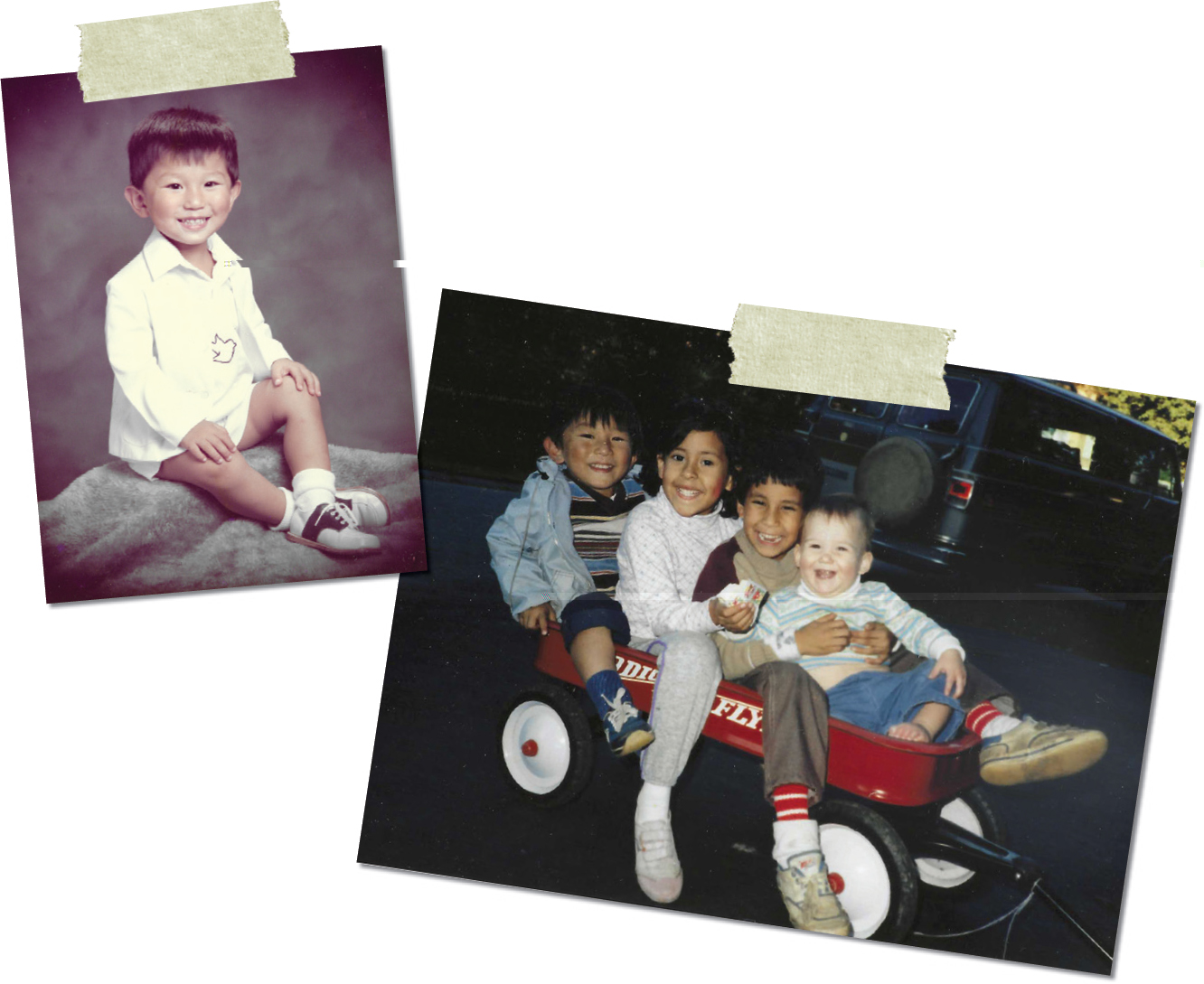
My dad still tells the story about the day they brought me home. Peter was as neat as a pin. Right off the plane, he went into his room, took out all his clothes, folded them, and put them away in a drawer. I was already potty-trained, and I had a great appetite. My good habits, apparently, made the 7,000-mile trip with me. My favorite meal was fish and rice, which my mom took pains to prepare for me on top of the food she was cooking for everyone else. To her relief, I adapted quickly. Before long, I was enjoying spaghetti, green peas, and garden salads with ranch dressing, same as everyone else around the table.
Both Chicago natives, Dennis and Sally met as freshmen at the University of Illinois. Mom came from a Polish family, dad from an Italian one. Right out of school, he got a job in the Applied Physics Laboratory of Johns Hopkins University, which is what brought them to the Baltimore area. Dad, an electrical engineer, worked on radar and missiles and other things he still cant really talk about. Mom worked in banking, and later became an ESL teacher. Our parents, the twins, me, and our youngest sister Jackiewe were, and are, your standard-issue American family.
We lived in a nice, unassuming four-bedroom house with a deck and a backyard tire swing in Laurel, about halfway between Baltimore and DC. We went to Hammond High, attended mass at St. John the Evangelist, and rooted for the Washington Redskins. Our parents were both tremendous athletesbiking, running, racquetballand encouraged us to be active. When I was 11, we participated in Cycle Across Maryland, a 320-mile ride that took us all over the state on two wheels. I didnt care much for cycling, but I did like baseball. Dad coached me in Little League, and I continued playing through high school, catcher and right field mostly.
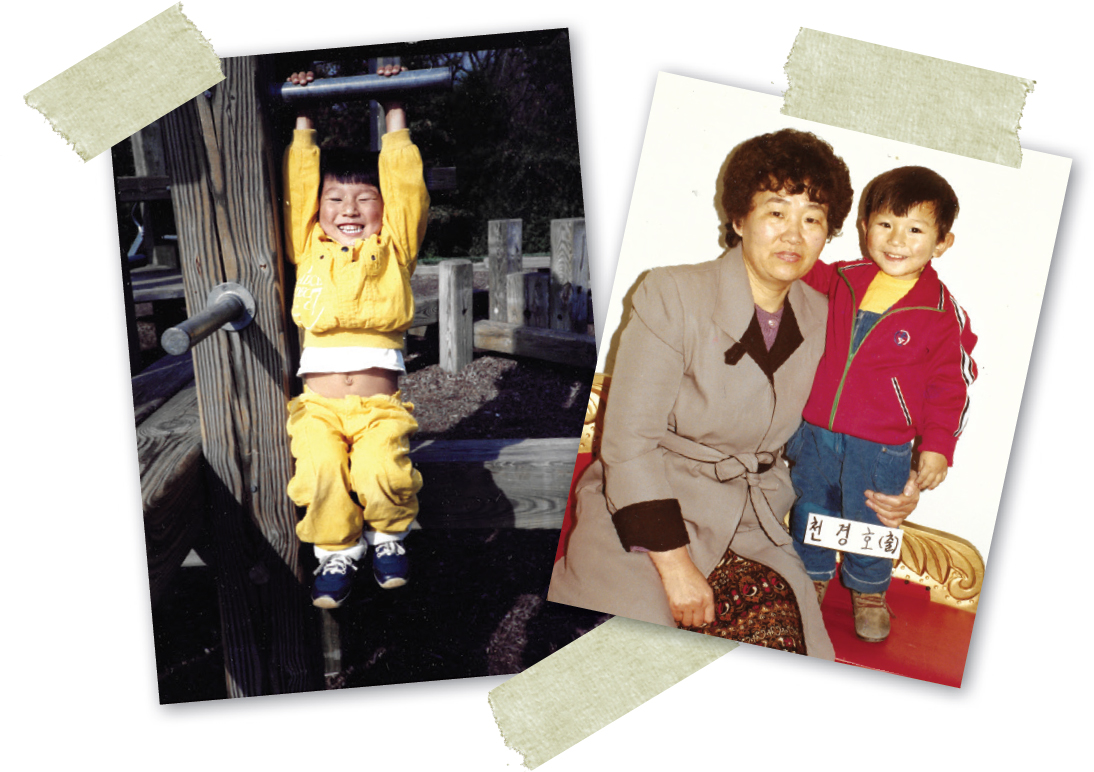
On special occasions, wed go out to a restaurant like The Tomato Palace, which had the red-and-white checkered tablecloths youd expect to see at a restaurant called The Tomato Palace. But there being six of us, we ate pretty much all of our meals at home. My mom, who passed away in 2004, called all the shots in the kitchen. Dads domain was the grill, but really he was in charge of dishes.
Mom would have her huge grocery haul from BJs, then painstakingly plan out everything to portion, store, and freeze, stretching a single shopping trip out weeks. Her Friday night mac and cheeseelbows, extra-sharp cheddar, bchamelis one meal I remember well. I still make it with my daughter, Charlie, whose favorite part is sprinkling the paprika on top before we slide it into the oven. Then there was my maternal grandmothers apple pie, always waiting for us when we arrived at her house on Greenleaf Avenue, the best reward after the endless drive to Chicago.



